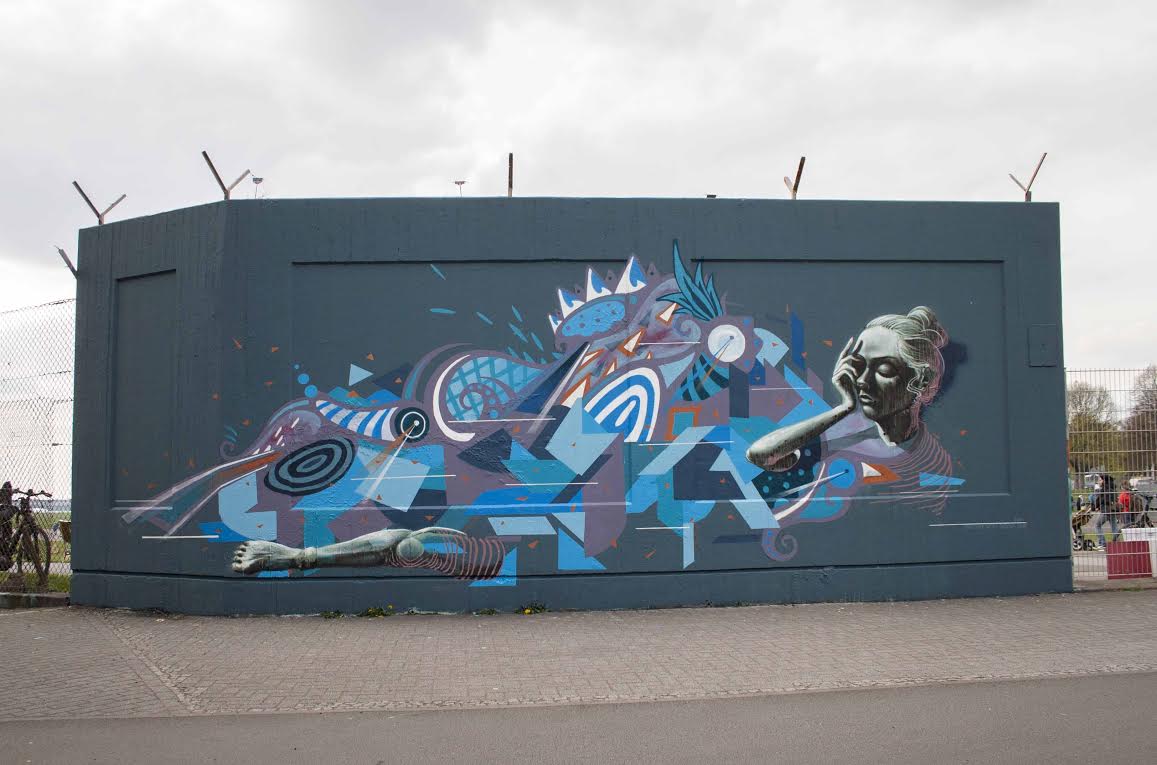Skount with the help of his friends Sokaruno and Kera painted a mural at the historic airport of Tempelhof in Berlin.
Tempelhof Airport
 PAST:
PAST:
The Prussians once paraded on the grounds that are now Tempelhof. Then, in the 1930s, the architect Ernst Sagebiel took what was a modest airfield and conceived the site as a gigantic entrance to Hitler’s new Germany.
Later, his brainchild — what the architect Norman Foster has called “the mother of all airports” — was used by the United States and its allies to run the airlift that saved West Berlin from a Soviet blockade.
Tempelhof’s sweep and size, as well as its location in the center of Berlin, are so impressive that everything down to the airport signs and now disused luggage conveyors remain under legal protection as a monument.
All its life, in fact, Tempelhof Airport has been writing chapters of the history of Berlin. So it was perhaps inevitable that it would land a leading role in the current one.
PRESENT:
Closed on 2008 to the passengers after about 80 years in service and reopened as a recreational park in 2015. Today, it is in the throes of becoming Germany’s largest refugee center. For Tempelhof, that spells yet another transformation.
FUTURE:
Now it is slated to become one of the biggest refugee camps in Europe. Already the former aircraft hangars are occupied by a few thousand refugees, mostly from Syria. By the end of the year the former airport grounds are expected to house nearly 7000, after they figure out how to shelter, feed, heat, entertain and aid the new arrivals from Syria, Afghanistan, Iraq and elsewhere.
source: New York Times
















